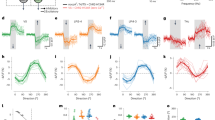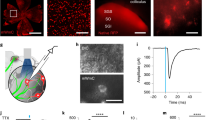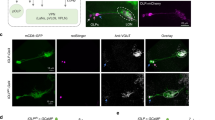Abstract
Neuronal connections are often organized in layers that contain synapses between neurons that have similar functions. In Drosophila, R7 and R8 photoreceptors, which detect different wavelengths, form synapses in distinct medulla layers. The mechanisms underlying the specificity of synaptic-layer selection remain unclear. We found that Golden Goal (Gogo) and Flamingo (Fmi), two cell-surface proteins involved in photoreceptor targeting, functionally interact in R8 photoreceptor axons. Our results indicate that Gogo promotes R8 photoreceptor axon adhesion to the temporary layer M1, whereas Gogo and Fmi collaborate to mediate axon targeting to the final layer M3. Structure-function analysis suggested that Gogo and Fmi interact with intracellular components through the Gogo cytoplasmic domain. Moreover, Fmi was also required in target cells for R8 photoreceptor axon targeting. We propose that Gogo acts as a functional partner of Fmi for R8 photoreceptor axon targeting and that the dynamic regulation of their interaction specifies synaptic-layer selection of photoreceptors.
This is a preview of subscription content, access via your institution
Access options
Subscribe to this journal
Receive 12 print issues and online access
$209.00 per year
only $17.42 per issue
Buy this article
- Purchase on Springer Link
- Instant access to full article PDF
Prices may be subject to local taxes which are calculated during checkout








Similar content being viewed by others
References
Luo, L. & Flanagan, J.G. Development of continuous and discrete neural maps. Neuron 56, 284–300 (2007).
Huberman, A.D., Clandinin, T.R. & Baier, H. Molecular and cellular mechanisms of lamina-specific axon targeting. Cold Spring Harb. Perspect. Biol. 2, a001743 (2010).
Sanes, J.R. & Zipursky, S.L. Design principles of insect and vertebrate visual systems. Neuron 66, 15–36 (2010).
Sanes, J.R. & Yamagata, M. Many paths to synaptic specificity. Annu. Rev. Cell Dev. Biol. 25, 161–195 (2009).
Yamagata, M. & Sanes, J.R. Dscam and Sidekick proteins direct lamina-specific synaptic connections in vertebrate retina. Nature 451, 465–469 (2008).
Yamagata, M., Weiner, J.A. & Sanes, J.R. Sidekicks: synaptic adhesion molecules that promote lamina-specific connectivity in the retina. Cell 110, 649–660 (2002).
Ting, C.Y. & Lee, C.H. Visual circuit development in Drosophila. Curr. Opin. Neurobiol. 17, 65–72 (2007).
Mast, J.D., Prakash, S., Chen, P.L. & Clandinin, T.R. The mechanisms and molecules that connect photoreceptor axons to their targets in Drosophila. Semin. Cell Dev. Biol. 17, 42–49 (2006).
Astigarraga, S., Hofmeyer, K. & Treisman, J.E. Missed connections: photoreceptor axon seeks target neuron for synaptogenesis. Curr. Opin. Genet. Dev. 20, 400–407 (2010).
Lee, C.H., Herman, T., Clandinin, T.R., Lee, R. & Zipursky, S.L. N-cadherin regulates target specificity in the Drosophila visual system. Neuron 30, 437–450 (2001).
Berger, J. et al. Systematic identification of genes that regulate neuronal wiring in the Drosophila visual system. PLoS Genet. 4, e1000085 (2008).
Maurel-Zaffran, C., Suzuki, T., Gahmon, G., Treisman, J.E. & Dickson, B.J. Cell-autonomous and -nonautonomous functions of LAR in R7 photoreceptor axon targeting. Neuron 32, 225–235 (2001).
Clandinin, T.R. et al. Drosophila LAR regulates R1–R6 and R7 target specificity in the visual system. Neuron 32, 237–248 (2001).
Garrity, P.A. et al. Retinal axon target selection in Drosophila is regulated by a receptor protein tyrosine phosphatase. Neuron 22, 707–717 (1999).
Newsome, T.P., Asling, B. & Dickson, B.J. Analysis of Drosophila photoreceptor axon guidance in eye-specific mosaics. Development 127, 851–860 (2000).
Shinza-Kameda, M., Takasu, E., Sakurai, K., Hayashi, S. & Nose, A. Regulation of layer-specific targeting by reciprocal expression of a cell adhesion molecule, capricious. Neuron 49, 205–213 (2006).
Shishido, E., Takeichi, M. & Nose, A. Drosophila synapse formation: regulation by transmembrane protein with Leu-rich repeats, CAPRICIOUS. Science 280, 2118–2121 (1998).
Tomasi, T., Hakeda-Suzuki, S., Ohler, S., Schleiffer, A. & Suzuki, T. The transmembrane protein Golden goal regulates R8 photoreceptor axon-axon and axon-target interactions. Neuron 57, 691–704 (2008).
Lee, R.C. et al. The protocadherin Flamingo is required for axon target selection in the Drosophila visual system. Nat. Neurosci. 6, 557–563 (2003).
Senti, K.A. et al. Flamingo regulates R8 axon-axon and axon-target interactions in the Drosophila visual system. Curr. Biol. 13, 828–832 (2003).
Usui, T. et al. Flamingo, a seven-pass transmembrane cadherin, regulates planar cell polarity under the control of Frizzled. Cell 98, 585–595 (1999).
Gao, F.B., Kohwi, M., Brenman, J.E., Jan, L.Y. & Jan, Y.N. Control of dendritic field formation in Drosophila: the roles of flamingo and competition between homologous neurons. Neuron 28, 91–101 (2000).
Chen, P.L. & Clandinin, T.R. The cadherin Flamingo mediates level-dependent interactions that guide photoreceptor target choice in Drosophila. Neuron 58, 26–33 (2008).
McGuire, S.E., Mao, Z. & Davis, R.L. Spatiotemporal gene expression targeting with the TARGET and gene-switch systems in Drosophila. Sci. STKE 2004, pl6 (2004).
Vladar, E.K., Antic, D. & Axelrod, J.D. Planar cell polarity signaling: the developing cell's compass. Cold Spring Harb. Perspect. Biol. 1, a002964 (2009).
Ting, C.Y. et al. Drosophila N-cadherin functions in the first stage of the two-stage layer-selection process of R7 photoreceptor afferents. Development 132, 953–963 (2005).
Kimura, H., Usui, T., Tsubouchi, A. & Uemura, T. Potential dual molecular interaction of the Drosophila 7-pass transmembrane cadherin Flamingo in dendritic morphogenesis. J. Cell Sci. 119, 1118–1129 (2006).
Chen, W.S. et al. Asymmetric homotypic interactions of the atypical cadherin flamingo mediate intercellular polarity signaling. Cell 133, 1093–1105 (2008).
Strutt, H. & Strutt, D. Differential stability of flamingo protein complexes underlies the establishment of planar polarity. Curr. Biol. 18, 1555–1564 (2008).
Keleman, K. & Dickson, B.J. Short- and long-range repulsion by the Drosophila Unc5 netrin receptor. Neuron 32, 605–617 (2001).
Bazigou, E. et al. Anterograde Jelly belly and Alk receptor tyrosine kinase signaling mediates retinal axon targeting in Drosophila. Cell 128, 961–975 (2007).
Struhl, G. & Basler, K. Organizing activity of wingless protein in Drosophila. Cell 72, 527–540 (1993).
Saka, Y., Hagemann, A.I. & Smith, J.C. Visualizing protein interactions by bimolecular fluorescence complementation in Xenopus. Methods 45, 192–195 (2008).
Gajadhar, A. & Guha, A. A proximity ligation assay using transiently transfected, epitope-tagged proteins: application for in situ detection of dimerized receptor tyrosine kinases. Biotechniques 48, 145–152 (2010).
Shima, Y. et al. Opposing roles in neurite growth control by two seven-pass transmembrane cadherins. Nat. Neurosci. 10, 963–969 (2007).
Shima, Y., Kengaku, M., Hirano, T., Takeichi, M. & Uemura, T. Regulation of dendritic maintenance and growth by a mammalian 7-pass transmembrane cadherin. Dev. Cell 7, 205–216 (2004).
Grueber, W.B., Jan, L.Y. & Jan, Y.N. Tiling of the Drosophila epidermis by multidendritic sensory neurons. Development 129, 2867–2878 (2002).
Nern, A., Zhu, Y. & Zipursky, S.L. Local N-cadherin interactions mediate distinct steps in the targeting of lamina neurons. Neuron 58, 34–41 (2008).
Takemura, S.Y., Lu, Z. & Meinertzhagen, I.A. Synaptic circuits of the Drosophila optic lobe: the input terminals to the medulla. J. Comp. Neurol. 509, 493–513 (2008).
Morante, J. & Desplan, C. The color-vision circuit in the medulla of Drosophila. Curr. Biol. 18, 553–565 (2008).
Fan, Y. et al. The egghead gene is required for compartmentalization in Drosophila optic lobe development. Dev. Biol. 287, 61–73 (2005).
Tree, D.R. et al. Prickle mediates feedback amplification to generate asymmetric planar cell polarity signaling. Cell 109, 371–381 (2002).
Clandinin, T.R. & Zipursky, S.L. Afferent growth cone interactions control synaptic specificity in the Drosophila visual system. Neuron 28, 427–436 (2000).
Strutt, D.I. Asymmetric localization of frizzled and the establishment of cell polarity in the Drosophila wing. Mol. Cell 7, 367–375 (2001).
Thibault, S.T. et al. A complementary transposon tool kit for Drosophila melanogaster using P and piggyBac. Nat. Genet. 36, 283–287 (2004).
Lee, T. & Luo, L. Mosaic analysis with a repressible cell marker for studies of gene function in neuronal morphogenesis. Neuron 22, 451–461 (1999).
Wu, J.S. & Luo, L. A protocol for dissecting Drosophila melanogaster brains for live imaging or immunostaining. Nat. Protoc. 1, 2110–2115 (2006).
Acknowledgements
We thank N. Hengrung for helping with BiFC experiments, I. Siwanowicz for helping with agarose sections and M. Braun for electron microscopy sections. We thank I. Salecker, T. Clandinin, J. Axelrod, D. Strutt, B. Dickson, K. Keleman, H. Oda, H. Bellen, J. Morante, J. Smith, Developmental Studies Hybridoma Bank (University of Iowa), Drosophila Genetic Resource Center (Kyoto), Exelixis Collection at Harvard and Bloomington Stock Center for reagents, and FlyBase for information resources. We thank R. Klein, F. Schnorrer, J. Egea for suggestions and comments, and members of the Suzuki laboratory for critical discussions. This work was supported by the Max Planck Society and an individual grant from the Deutsche Forschungsgemeinschaft (T.S.).
Author information
Authors and Affiliations
Contributions
S.H.-S. conducted the genetic and histological experiments. S.B.-M. conducted the cell culture and biochemical experiments and assisted with the genetic experiments. T.T. conducted the lamina cartridge experiments. T. Usui, S.-y.H. and T. Uemura generated and provided the hypomorphic allele of fmi. S.H.-S. and T.S. designed the experiments. S.B.-M., S.H.-S. and T.S. wrote the paper.
Corresponding author
Ethics declarations
Competing interests
The authors declare no competing financial interests.
Supplementary information
Supplementary Text and Figures
Supplementary Figures 1–17, Supplementary Tables 1, 2 and Supplementary Note 1 (PDF 2523 kb)
Rights and permissions
About this article
Cite this article
Hakeda-Suzuki, S., Berger-Müller, S., Tomasi, T. et al. Golden Goal collaborates with Flamingo in conferring synaptic-layer specificity in the visual system. Nat Neurosci 14, 314–323 (2011). https://doi.org/10.1038/nn.2756
Received:
Accepted:
Published:
Issue Date:
DOI: https://doi.org/10.1038/nn.2756
This article is cited by
-
ppGpp functions as an alarmone in metazoa
Communications Biology (2020)
-
The atypical cadherin flamingo determines the competence of neurons for activity-dependent fine-scale topography
Molecular Brain (2019)
-
Strategies for assembling columns and layers in the Drosophila visual system
Neural Development (2018)
-
Shaping the nervous system: role of the core planar cell polarity genes
Nature Reviews Neuroscience (2013)
-
Planar cell polarity genes, Celsr1-3, in neural development
Neuroscience Bulletin (2012)



